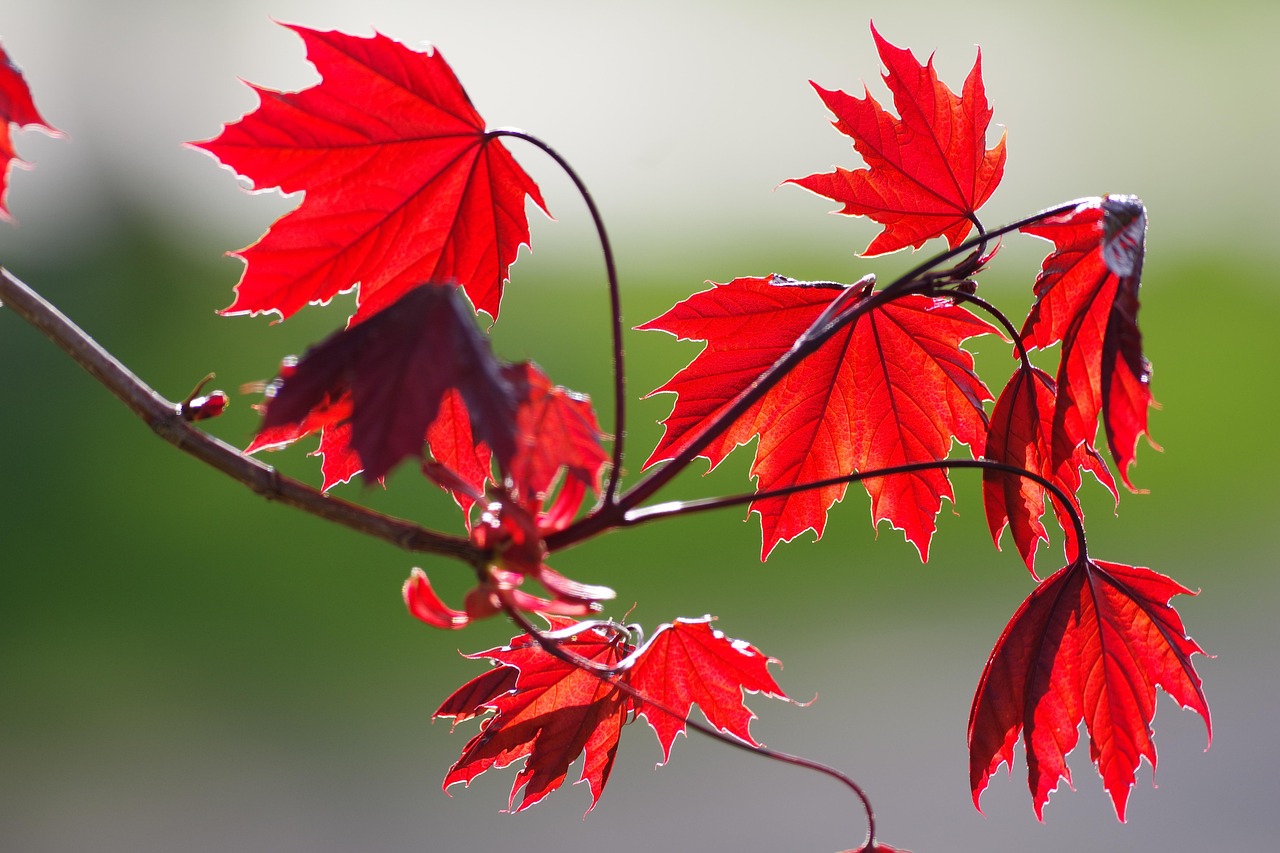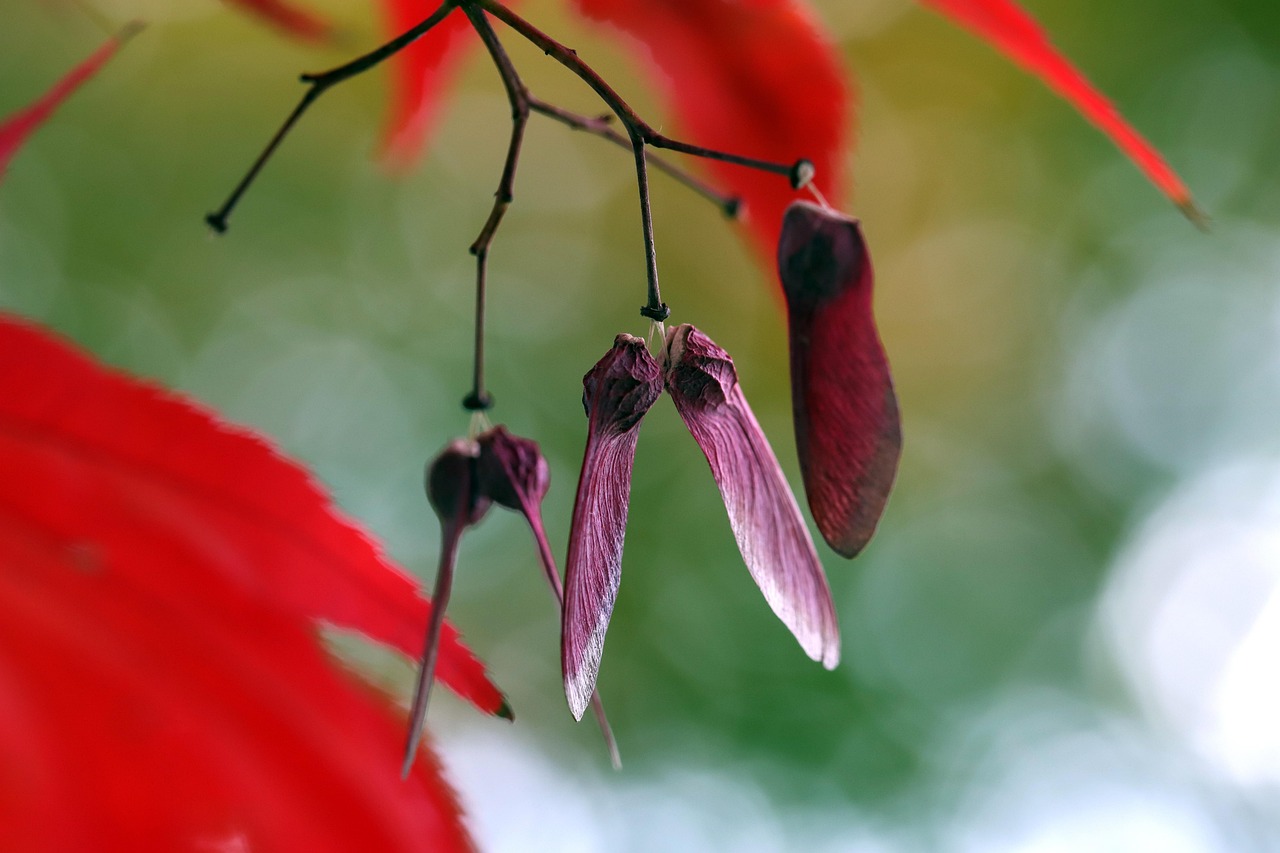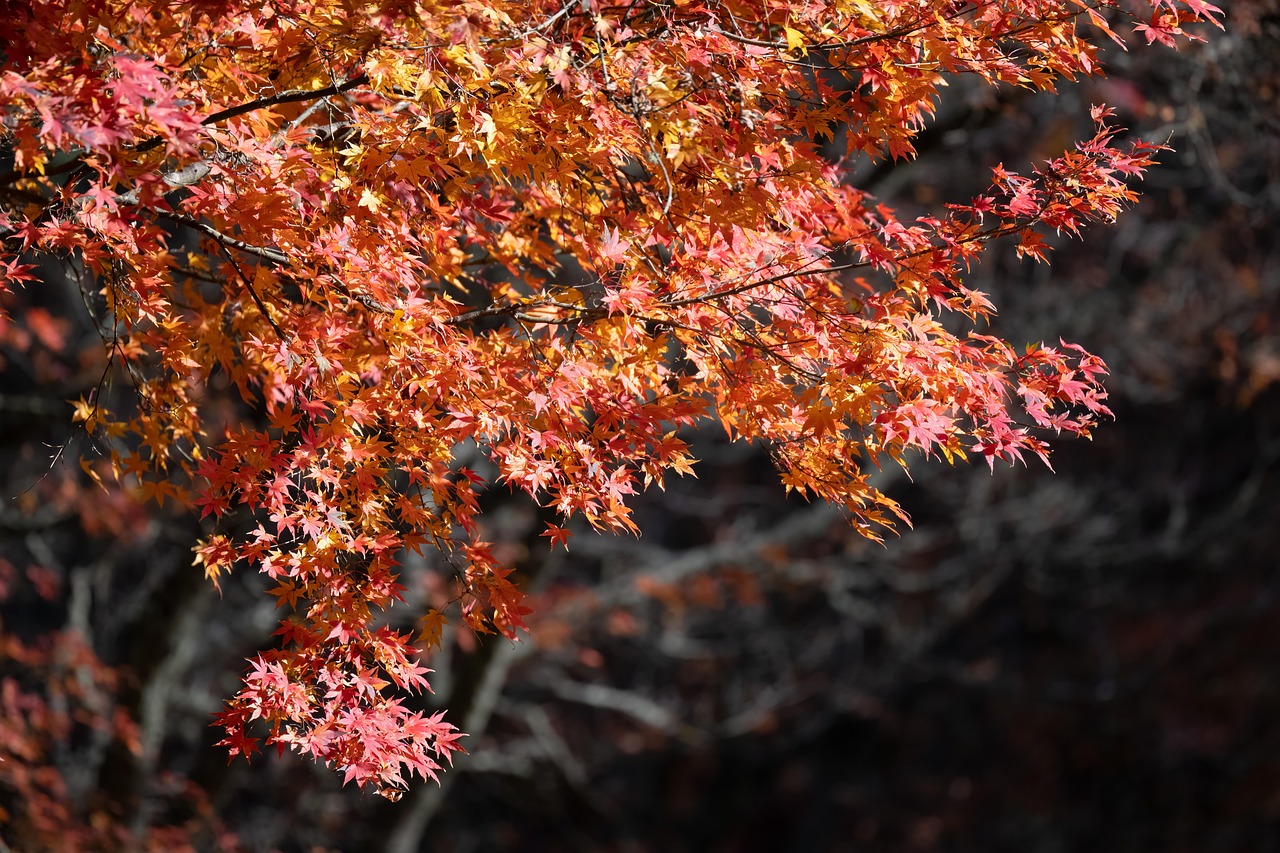Yes, Red Maple trees can grow alongside other trees. However, careful selection of companion plants is crucial. They thrive best with species that complement their growing conditions and do not compete for nutrients or space.
The Red Maple, scientifically known as Acer rubrum, is a popular tree native to North America. Known for its stunning fall foliage and rapid growth, it is a favorite among homeowners and landscapers alike. Its adaptability to various soil types and conditions makes it a versatile choice for many landscapes. However, when considering planting Red Maples in a mixed tree environment, understanding their needs and compatibility with other species is essential.
Red Maples prefer well-drained, moist soils and thrive in full sun to partial shade. They can reach heights of 40 to 60 feet, with a similar spread. Their root systems are shallow, making them sensitive to competition from other trees. Therefore, selecting the right companions is vital for ensuring healthy growth and a balanced ecosystem.
Understanding Companion Planting

Companion planting is the practice of growing two or more plant species together for mutual benefit. This can include enhancing growth, repelling pests, or improving overall plant health. When it comes to trees, choosing companions that share similar environmental needs can lead to a thriving landscape.
For Red Maples, ideal companions are those that can coexist without overly competing for resources. Consider factors such as soil moisture, sunlight requirements, and root systems when selecting companion trees.
Ideal Companion Trees for Red Maples
Several tree species work well alongside Red Maples. Here are some of the most compatible options:
- Black Cherry (Prunus serotina): This tree grows well in similar soil conditions and provides beautiful spring blossoms.
- White Oak (Quercus alba): A strong tree that offers shade and support for various wildlife.
- Eastern Red Cedar (Juniperus virginiana): This evergreen provides year-round greenery and works well in diverse settings.
- Sweetgum (Liquidambar styraciflua): Known for its star-shaped leaves, it adds visual interest while thriving in similar conditions.
- River Birch (Betula nigra): This tree does well in wet soils, making it an excellent match for the moisture-loving Red Maple.
Factors to Consider When Planting
When planning to plant Red Maples with other trees, consider the following factors:
- Space Requirements: Ensure that each tree has enough space to grow without overcrowding.
- Soil Composition: Test the soil to confirm it meets the needs of all species involved.
- Sunlight Availability: Assess the sunlight in the area to ensure all trees receive adequate light.
- Water Needs: Make sure that all trees can thrive with the available water supply.
- Growth Rates: Consider how quickly each species grows to avoid competition for resources.
Challenges of Growing Red Maples with Other Trees
While Red Maples can thrive alongside other trees, there are challenges to be aware of. These include competition for nutrients and space. Additionally, certain tree species can produce allelopathic chemicals that inhibit growth in nearby plants. It is important to research potential companion trees thoroughly.
Pests and Diseases
Pests and diseases can also affect the health of Red Maples planted with other trees. Common issues include:
- Aphids: These pests can weaken trees by sucking sap and may spread diseases.
- Crown Gall: This bacterial disease can affect the roots and lower branches, causing growth issues.
- Leaf Spot: Fungal infections can lead to leaf discoloration and premature dropping.
To mitigate these risks, regular monitoring and proper care practices are essential. Implementing integrated pest management strategies can help maintain tree health.
Conclusion of This Section
Choosing the right companion plants for Red Maples can enhance the beauty and health of your landscape. By considering the needs and characteristics of each tree species, you can create a thriving ecosystem. In the following sections, we will explore specific planting strategies and maintenance tips for successful companion planting with Red Maples.
Best Practices for Planting Red Maples with Other Trees
When it comes to successfully planting Red Maples alongside other trees, certain best practices can help ensure healthy growth and minimize competition. These practices focus on proper planning, site preparation, and ongoing care.
Site Selection and Preparation
The first step in planting Red Maples with other trees is selecting the right site. Consider the following factors:
- Sunlight Exposure: Red Maples thrive in full sun to partial shade. Choose a location that provides at least 4 to 6 hours of sunlight daily.
- Soil Drainage: Ensure the soil is well-drained but retains some moisture. Avoid areas where water tends to pool after heavy rainfall.
- Space Availability: Plan for enough distance between trees to allow for their mature size. This reduces competition and encourages healthy growth.
- Proximity to Structures: Avoid planting too close to buildings or other structures. This ensures adequate airflow and light exposure.
Once the site is selected, prepare the soil by removing any weeds or debris. You may also want to test the soil pH, as Red Maples prefer slightly acidic to neutral soil (pH 5.5 to 7.0).
Planting Techniques
Proper planting techniques are crucial for the long-term success of Red Maples. Follow these steps:
- Digging the Hole: Create a hole that is twice as wide as the tree’s root ball but no deeper than the ball itself. This helps promote root spreading.
- Amending the Soil: Mix some organic compost into the native soil to enhance fertility and improve drainage.
- Positioning the Tree: Place the tree in the center of the hole, ensuring that the top of the root ball is level with the surrounding soil.
- Backfilling the Hole: Fill in around the root ball with soil, gently tamping down to eliminate air pockets.
- Watering: Water thoroughly after planting to settle the soil and provide moisture to the roots.
Watering and Nutrient Needs
The watering and nutrient needs of Red Maples are essential for their health, especially when planted with other trees. Understanding these needs will help you maintain a thriving landscape.
Watering Practices
Red Maples require consistent moisture, particularly during their early years. Here are some tips for effective watering:
- Frequency: Water newly planted trees once a week during dry spells, ensuring deep watering that reaches the root zone.
- Mulching: Apply a layer of organic mulch around the base of the tree. This helps retain moisture and suppresses weeds.
- Monitoring Soil Moisture: Check the soil moisture regularly. The top inch of soil should feel damp but not soggy.
Nutrient Requirements
Red Maples benefit from balanced fertilization, especially in nutrient-poor soils. Consider these practices:
- Soil Testing: Conduct a soil test every few years to understand nutrient levels and pH balance.
- Fertilizer Application: Use a slow-release fertilizer specifically formulated for trees in early spring, following the manufacturer’s instructions.
- Organic Amendments: Incorporate organic matter, like compost or well-rotted manure, to enrich the soil naturally.
Maintenance and Care Throughout the Seasons
Caring for Red Maples, especially when planted alongside other trees, involves ongoing maintenance throughout the seasons. Each season has specific tasks that can support healthy growth.
Spring Maintenance
As temperatures rise and new growth begins, focus on:
- Pruning: Trim any dead or damaged branches to encourage healthy new growth and improve airflow.
- Fertilizing: Apply fertilizer if needed based on soil test results, promoting vigorous growth during this active season.
- Watering: Increase watering frequency as temperatures rise, ensuring soil remains consistently moist.
Summer Care
During summer, continue to monitor trees for pests and diseases:
- Pest Management: Regularly inspect leaves for signs of aphids or other pests. Use organic insecticides if necessary.
- Watering Schedule: Adjust your watering schedule based on rainfall. Ensure trees receive at least an inch of water weekly.
- Mulch Maintenance: Replenish mulch as needed to retain moisture and suppress weeds.
Autumn Preparations
As fall approaches, prepare your Red Maples for winter:
- Leaf Cleanup: Rake fallen leaves to prevent fungal diseases and pest infestations.
- Final Watering: Water thoroughly before winter dormancy sets in, ensuring moisture is available during cold months.
- Tree Protection: Consider wrapping young trees with protective materials to prevent damage from frost or hungry wildlife.
Winter Care
During winter, there are fewer maintenance tasks but still some important considerations:
- Monitoring for Damage: Check for any signs of damage from snow or ice accumulation on branches.
- Planning for Spring: Use this time to plan any further landscaping or companion planting projects for spring.
- Avoiding Soil Compaction: Limit foot traffic around tree bases to prevent soil compaction, which can restrict root growth.
Pest and Disease Management for Red Maples


Maintaining the health of Red Maples when growing them alongside other trees requires diligent pest and disease management. Understanding common issues that can affect these trees is crucial for preventing and addressing potential problems effectively.
Common Pests Affecting Red Maples
Several pests are known to infest Red Maples. Awareness of these pests can help in identifying early signs of trouble:
- Aphids: These small insects feed on sap, weakening the tree. Look for sticky honeydew residue on leaves and the presence of sooty mold.
- Spider Mites: These tiny pests thrive in dry conditions, causing stippling on leaves. They can lead to leaf drop if not controlled.
- Scale Insects: These pests attach themselves to stems and leaves, sucking sap. They can cause significant stress to the tree.
- Leafhoppers: These insects can transmit diseases while feeding on the sap. Look for yellowing leaves and stunted growth.
Identifying Signs of Infestation
Regular monitoring is essential for identifying pest infestations early. Here are some signs to look for:
- Discolored Leaves: Yellowing or browning of leaves can indicate stress from pests.
- Webbing: Fine webs on leaves or branches suggest spider mites are present.
- Honeydew and Sooty Mold: Presence of sticky substances on leaves may indicate aphid activity.
- Stunted Growth: Overall lack of vigor may signal a pest problem.
Disease Issues in Red Maples
Like any tree, Red Maples are susceptible to certain diseases. Understanding these diseases can help in managing tree health effectively:
Common Diseases
Some prevalent diseases affecting Red Maples include:
- Crown Gall: This bacterial infection causes galls or tumors on roots and stems, leading to stunted growth.
- Leaf Spot Diseases: Fungal infections can cause spots and lesions on leaves, leading to premature leaf drop.
- Anthracnose: This fungal disease results in browning leaves and twig dieback, especially in wet conditions.
- Root Rot: Often caused by overwatering or poor drainage, this disease leads to wilting and decline of the tree.
Prevention and Control Measures
Implementing preventative measures is key to keeping Red Maples healthy. Here are some strategies:
- Maintain Healthy Soil: Ensure proper drainage and nutrient levels to promote strong root systems that resist disease.
- Regular Monitoring: Inspect trees regularly for signs of pests or disease. Early detection is critical for effective management.
- Remove Affected Parts: Prune off any diseased branches or leaves to prevent the spread of infection.
- Use Organic Treatments: When necessary, apply organic pesticides or fungicides following label instructions to control infestations.
- Avoid Overwatering: Ensure trees do not sit in waterlogged soil to prevent root rot and other moisture-related issues.
The Role of Mulching in Tree Health
Mulching plays a significant role in maintaining the health of Red Maples as well as their companion plants. Proper mulching practices can improve soil health, moisture retention, and overall tree vigor.
Benefits of Mulching
Applying mulch has several advantages, including:
- Moisture Retention: Mulch helps retain soil moisture, reducing the need for frequent watering during dry periods.
- Weed Suppression: A layer of mulch can inhibit weed growth, which competes for nutrients and water.
- Temperature Regulation: Mulch helps insulate the soil, keeping it cooler in summer and warmer in winter.
- Nutrient Enrichment: Organic mulches decompose over time, adding nutrients to the soil as they break down.
Types of Mulch to Use
Selecting the right type of mulch is essential for maximizing its benefits. Consider these options:
- Bark Mulch: Shredded bark is a popular choice that lasts long while providing good insulation and moisture retention.
- Wood Chips: Similar to bark mulch, wood chips offer a natural look and decompose slowly.
- Compost: Applying compost as mulch enriches the soil with nutrients while improving structure.
- Pine Needles: These provide good acidity and are particularly beneficial if your soil needs a pH adjustment.
Enhancing Biodiversity with Companion Planting

Companion planting not only benefits Red Maples but also enhances overall biodiversity in the landscape. Encouraging diverse plant life can lead to a more resilient ecosystem.
Choosing Companion Plants Wisely
Selecting the right companion plants is crucial for enhancing biodiversity. Consider these aspects:
- Diverse Root Structures: Choose plants with varying root depths to maximize nutrient uptake from different soil layers.
- Pest-Repelling Plants: Incorporate plants that repel common pests, providing a natural defense for Red Maples.
- Nitrogen Fixers: Leguminous plants like clover or peas can enhance soil fertility by fixing nitrogen, benefiting nearby trees.
- Attract Beneficial Insects: Select flowering plants that attract pollinators and beneficial insects, promoting a balanced ecosystem.
Examples of Compatible Companion Plants
Some excellent companion plants for Red Maples include:
- Blueberry (Vaccinium spp.): Thrives in acidic soils and attracts pollinators.
- Dogwood (Cornus spp.): Provides beautiful blooms and does well in similar conditions.
- Cranberry (Vaccinium macrocarpon): A low-growing plant that benefits from the shade provided by taller trees.
- Pawpaw (Asimina triloba): This small tree thrives in similar environments while enriching biodiversity.
By incorporating these practices, you can create a thriving environment for your Red Maples and their companions. This holistic approach not only supports tree health but also contributes to an aesthetically pleasing landscape filled with diversity and life.
Creating a Sustainable Ecosystem
Incorporating Red Maples into a diverse planting scheme not only enhances your landscape but also contributes to a sustainable ecosystem. By selecting the right companion plants, you can improve soil health, attract beneficial wildlife, and create a self-sustaining environment that requires less maintenance.
Soil Health and Microbial Activity
Healthy soil is the foundation of a thriving landscape. By using companion plants that enrich the soil, you can support the overall health of your Red Maples. Consider the following:
- Cover Crops: Planting cover crops during the off-season can prevent soil erosion, enhance soil structure, and contribute organic matter.
- Crop Rotation: Rotating companion plants seasonally can help break pest cycles and replenish nutrients in the soil.
- Organic Amendments: Regularly adding organic matter, such as compost or leaf mold, can improve soil fertility and microbial activity.
These practices not only benefit Red Maples but also enhance the ecosystem’s resilience against pests and diseases, creating a balanced environment for all plants involved.
Attracting Wildlife and Beneficial Insects
Planting a variety of species encourages biodiversity and attracts beneficial insects that can naturally control pests. Some important considerations include:
- Native Plants: Incorporate native species that are well-adapted to your region. They provide food and habitat for local wildlife.
- Flowering Plants: Select companion plants that produce flowers at different times throughout the growing season to attract pollinators such as bees and butterflies.
- Habitat Creation: Create structures like brush piles or rock gardens to provide shelter for beneficial insects and small wildlife.
This approach not only supports Red Maples but encourages a thriving local ecosystem that benefits all plants and animals in the area.
Seasonal Considerations for Companion Planting
Understanding how seasonal changes affect plant growth can help you make informed decisions about companion planting:
- Spring Planting: Early spring is an excellent time to introduce new companions. Ensure they are planted after the last frost to promote successful establishment.
- Summer Maintenance: During warmer months, monitor moisture levels and ensure adequate watering. Companion plants may require additional care during this time.
- Fall Preparation: As temperatures drop, begin preparing your landscape for winter. This includes mulching and removing any diseased or dying plants.
- Winter Care: Use winter to plan for the next season. Evaluate which companions thrived and consider adjustments for better performance in the coming year.
Conclusion
Growing Red Maples alongside other trees is not only possible but can lead to a vibrant and flourishing landscape. By understanding the compatibility of various tree species, implementing thoughtful planting strategies, and maintaining proper care throughout the seasons, you can create a thriving ecosystem. Key takeaways include:
- Choose companion plants that complement Red Maples’ growing conditions to minimize competition.
- Regular monitoring for pests and diseases is essential for maintaining tree health.
- Implementing mulching and organic practices enhances soil health and supports biodiversity.
- Attracting beneficial insects through diverse plantings helps control pests naturally.
- Adapt your gardening practices seasonally to ensure the ongoing health of both Red Maples and their companions.
By embracing these practices, you will not only ensure the health and beauty of your Red Maples but also contribute positively to the environment. A carefully curated planting scheme can yield long-lasting rewards, making your landscape not just beautiful but also ecologically sound.
As you plan your garden or landscape, remember that each plant plays a role in creating balance. The synergy between Red Maples and their companions fosters an inviting space for wildlife, enhances aesthetic appeal, and promotes sustainability. Happy planting!
